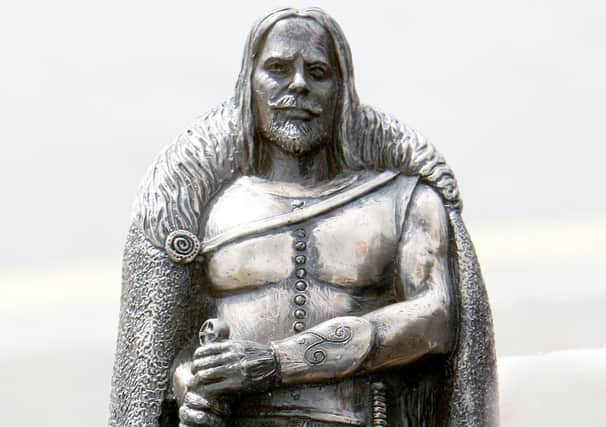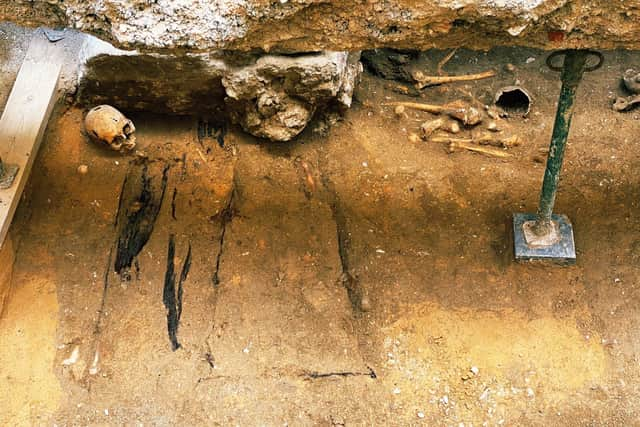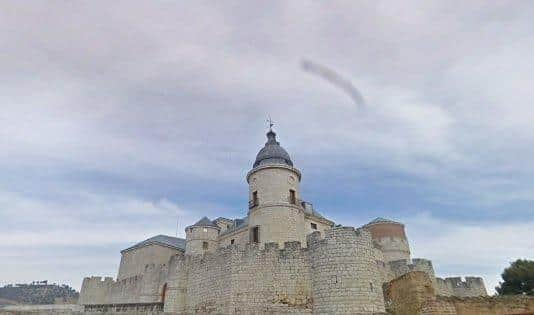Buried in exile: The death in Spainof the great Red Hugh O’Donnell


The dig is centred in Calle Constitución in the historic centre of Valladolid where experts believe the Tír Chonaill chieftain was buried in September 1602.
The discovery of the remains of the Lifford-born nobleman, most famous for waging the Nine Years’ War against the Tudor conquest in the 1590s, would represent a major historic breakthrough.
Advertisement
Hide AdAdvertisement
Hide AdIt would open another chapter in the story of one of the most fascinating figures in Irish history and it would further cement the strong historical ties between Spain and the north west of Ireland.


Red Hugh was born in the O’Donnell stronghold of Lifford on October 30, 1572.
He was the grandson of Manus O’Donnell, who was the author of a celebrated Life of Saint Columbkille, and he was the nephew of Calvagh O’Donnell, from whom the 19th century Prime Minister of Spain Leopoldo O’Donnell would later claim ancestry.
Red Hugh will foremost be remembered alongside his father-in-law Hugh ‘The Great’ O’Neill, as one of the leaders of the Nine Years’ War against English rule in Ireland that ended in disaster at Kinsale on January 3, 1602.
Advertisement
Hide AdAdvertisement
Hide AdWhen 4,000 men that had been sent by King Philip III of Spain to assist the O’Neill and O’Donnell rebellion landed in Cork rather than Ulster as had been intended, Lord Deputy Mountjoy laid siege to the town of Kinsale.


The two Hughs were left with no choice but to muster an army and embark on a forced march from their Ulster strongholds in the depths of winter in order to relieve their trapped allies. They suffered a crushing defeat at the Battle of Kinsale in January 1602.
This pivotal setback led Red Hugh to Spain where he hoped to procure arms and troops to continue the war against the English. He would never return. Three days after the decisive English victory over a combined Irish and Spanish force under the command of O’Donnell, O’Neill and Juan del Águila all but ended the Nine Year’s War Red Hugh set sail from Castlehaven in West Cork.
On January 14 he landed at A Coruña. He rested for a while in Galicia to overcome his fatigue from his warring and his long sea voyage.
Advertisement
Hide AdAdvertisement
Hide AdAccording to Lughaidh Ó Cléirigh, the Gaelic historian and near contemporary of Red Hugh, he shortly afterwards set off for Zamora in Castile and León in order to ask Philip III of Spain for more arms and soldiers. This request was granted and Red Hugh was asked to return to A Coruña to await the promised army.
Ó Cléirigh relates that O’Donnell spent the spring, summer and the beginning of the harvest in Galicia and soon became frustrated at the length of time it was taking for the support to arrive.
“He was in this condition until he prepared to go into the king’s presence again in order to learn the cause and procrastination about the troops and the army promised to him.
“When he came to the town of Simancas (two leagues from Valladolid, the King’s palace) God permitted, and the ill-luck and misfortune, the wretchedness and the curse attending the island of Eremon and the Irish of Fodla too, would have it that O’Donnell should catch his death-sickness and his mortal illness,” writes Ó Cléirigh in his 17th century biography of Red Hugh, Beatha Aodha Ruaidh Uí Dhomhnaill.
Advertisement
Hide AdAdvertisement
Hide Ad“He was for sixteen days on his bed of sickness. At last he died at the end of that time, the tenth day of September exactly, lamenting his faults and transgressions, after rigid penance for his sins and iniquities, having made his confession without reserve to his spiritual confessor, and receiving the Body and Blood of Christ, and being duly anointed by the hands of his confessor and his ecclesiastical elders, who were in his company always up to that time.
“It was in the palace of the King of Spain himself in the town of Simancas he died. His body was then taken to Valladolid, to the King’s Court, in a four-wheeled hearse, with great numbers of state officers, of the Council and of the royal guard all round it, with blazing torches and bright flambeux of beautiful waxlights blazing all round on each side of it.
“He was buried after that in the chapter of the monastery of St. Francis with great honour and respect and in the most solemn manner any Gael before had been interred.
“Masses and many chants, and sweet canticles were offered for the welfare of his soul, and his requiem was celebrated as was fitting,” Ó Cléirigh describes.
Advertisement
Hide AdAdvertisement
Hide AdRed Hugh was dead but the exact circumstances surrounding his death are still disputed.
Some believe he was poisoned while others contend that he died of natural causes.
Ó Cléirigh makes no mentioned of foul play, merely referring to a ‘mortal sickness’ that O’Donnell caught and suffered from for 16 days.
Writing in the 1890s, however, Rev. Denis Murphy provides some evidence to support an argument that he was assassinated by a James Blake, a Galway merchant who had won the confidence of the King of Spain for the aid he had given survivors of the wreck of the Armada in Ireland.
Advertisement
Hide AdAdvertisement
Hide AdRev. Murphy produces a letter, dated May 28, 1602, from George Carew, President of Munster, to the Lord Deputy Mountjoy, that details a meeting with Blake in which he offered to follow O’Donnell to Spain and kill him.
“He departed from me and is gone into Spain with a determination (bound with many oaths) to kill O’Donnell,” the letter reads.
On October 9, 1602, a month after O’Donnell’s death, Carew wrote to Mountjoy from Cork: “By this intelligence enclosed it appears that the Spaniards come not this winter, and that O’Donnell is dead, whereof your Lordship may be assured, for the merchant that bringeth me the news I do trust, and I do think it will fall out that he was poisoned by James Blake.”
Both letters were held in the Lambeth Library at the time of Rev. Murphy’s writing.
Advertisement
Hide AdAdvertisement
Hide AdIn his biography of Red Hugh’s great comrade, Hugh O’Neill, Seán O’Faolain, writing in 1942, wrote that “[O’Neill]’ did not get word about Red Hugh until October - and then news came that he was dead: poisoned most men believed by an English agent named Blake sent after him to Spain.
“The point has never been conclusively proved but the balance of suspicion is heavily on the side of assassination. Dead by the will of God or dead by the hand of an assassin, the passing of Red Hugh broke O’Neill.”
Five years later Hugh O’Neill and Red Hugh’s brother Rory, who had become ‘the O’Donnell’ upon his brother’s death, set sail from Rathmullan for Europe. Red Hugh’s other brother Cathbharr joined them.
Rory died in 1608 while Cathbarr passed away a year later. ‘The Great O’Neill’ lived until 1616. Like Red Hugh they were all buried in exile and their bones are held in the Church of San Pietro de Montorio in the Trastevere area of Rome not far from the Vatican City.
Advertisement
Hide AdAdvertisement
Hide AdThe bones of Red Hugh O’Donnell have been missing for hundreds of years and although there are plaques in his honour at the entrance of Simancas Castle, the current home of the Spanish archives, and in central Valladolid, their whereabouts have been a mystery since the destruction of the Franciscan monastery where he was interred in the early 1800s. Perhaps a team of archaeologists in Spain are about to shed new light on that mystery and open up a new chapter in the life and legacy of Red Hugh.